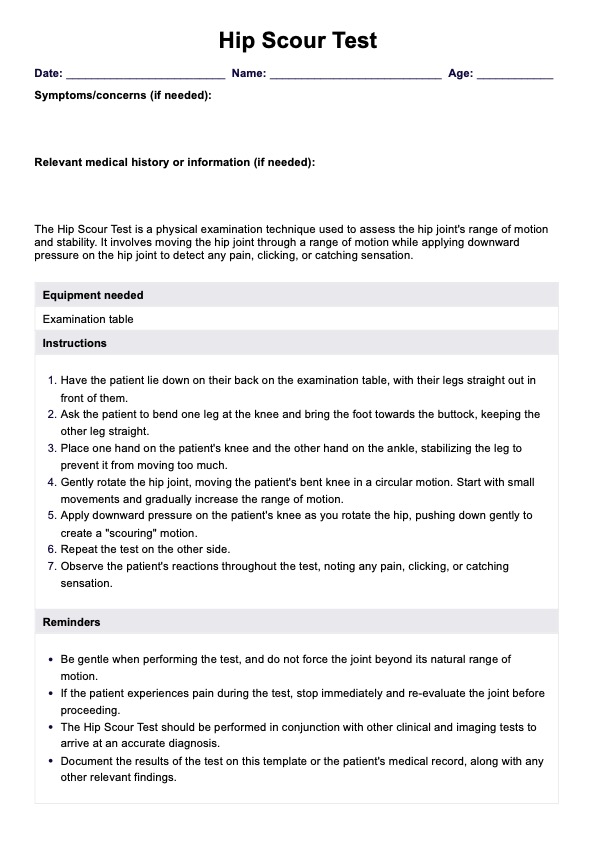This assessment tool doesn't have a scoring system. Instead, it is designed to assess the patient's current hip flexibility and range of motion, with the results marking a baseline for future improvement.

Hip Scour Test
Learn about the Hip Scour Test and how to use it with this free PDF download. Get the facts you need to know before beginning the test.
Use Template
Hip Scour Test Template
Commonly asked questions
The Hip Scaur Test offers several benefits. It is easy to use, noninvasive and can be completed quickly, making it an effective way to assess hip flexibility, range of motion, and balance.
The Hip Scour Test assesses a patient's current hip flexibility, range of motion, and balance. It is not intended to diagnose any particular condition but rather to provide a baseline measurement that can be used to monitor progress over time.
EHR and practice management software
Get started for free
*No credit card required
Free
$0/usd
Unlimited clients
Telehealth
1GB of storage
Client portal text
Automated billing and online payments











